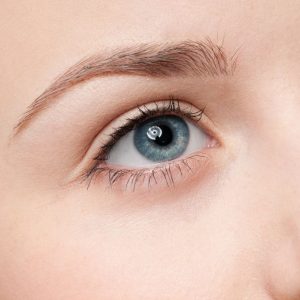 You have decided that the bit of baggy skin over and under your eyelids is making you look old before your time. You read about eyelid surgery, called “blepharoplasty,” in our previous blog. (You can click here and review that blog if you missed it.)One of your friends confided that this delicate eyelid surgery was the secret to her youthful look.
You have decided that the bit of baggy skin over and under your eyelids is making you look old before your time. You read about eyelid surgery, called “blepharoplasty,” in our previous blog. (You can click here and review that blog if you missed it.)One of your friends confided that this delicate eyelid surgery was the secret to her youthful look.
You decide you want to talk about it in depth, and you make a consultation appointment at Orlando Cosmetic Surgery, LLC. Your doctor will explain your “blepharoplasty” surgery in specific detail during your consultation. Although every case, patient and consultation is different, you might be prepared to discuss the topics listed below:
Phase I: The Consultation
1. Expectations: Why are you electing this procedure, and what do you think the final result will be?
2. History: What medical conditions, treatments and surgeries have you had in the past. Do you have any drug allergies?
3. Medications: What medications, vitamins, herbal supplements, and drugs are you currently taking?
4. Life Style: How much alcohol do you consume, on average, weekly? Do you smoke?
Phase 2 – Anesthesia
Naturally, medicine will be administered for your comfort during the eyelid surgery procedure. You and your doctor will discuss such choices as intravenous sedation or general anesthesia.
Phase 3 – The Incision
Do not worry about scars from a blepharoplasty, because the incision lines are designed to be well hidden in the natural folds of the eyelid area.
Do you have droopy upper eyelids? These are corrected with an incision in the natural crease of the upper eyelid. There, the surgeon removes deposits of fat. He will also tighten muscles and tissue, and possible remove extra skin.
 Do you have “baggage” under your lower eyelids? Your surgeon will make an incision just below the lash line. He gently removes the excess skin, fat and tissue from the lower eyelid area. Another procedure for removal of skin and fat from the lower eyelids through an incision inside of the eye is termed transconjunctival .
Do you have “baggage” under your lower eyelids? Your surgeon will make an incision just below the lash line. He gently removes the excess skin, fat and tissue from the lower eyelid area. Another procedure for removal of skin and fat from the lower eyelids through an incision inside of the eye is termed transconjunctival .
Phase 4 – The Close
After the incision is made, and excess fat, muscle, and loose skin are removed, the time to close has arrived. “Fine sutures are used to close the incisions, thereby minimizing the visibility of any scar.” Your doctor might use removable or absorbable sutures to close the incision. He might also employ skin adhesives or surgical tape.
Step 5 – Optional Procedures
Depending on your consultation , your surgeon may utilize a laser chemical peel. This will erase or mitigate dark discoloration of the lower eyelids. As we stated in the previous blog, there might be other surgical procedures connected with this one. If so, your doctor will explain his recommendations for you.
Step 5 – Recovery and “Private Eyes”
1. Your eyes might have small, sterile bandages briefly at first.
2. Ointment might be used, to prevent dryness of the eye and surrounding area.
3. You can expect some swelling and bruising.
4. You should use Cold compresses, and elevate your head when you are lying down. These simple procedures will relieve discomfort.
5. Take your medicine. Your surgeon will prescribe medication for discomfort.
Over the days and weeks after surgery, you will notice the development of your radiant new look. The results of eyelid surgery will appear gradually as swelling and bruising disappear. Your recovery will then unveil a smoother, better-defined eyelid,and a better contour and texture to the skin in the eye area.
Friends will compliment you new, alert and rejuvenated appearance. Don’t worry, Orlando Cosmetic Surgery won’t reveal your secret. After all, they are your “Private Eyes.”
You can find out more about this beauty and confidence boosting procedure by clicking here. We genuinely appreciate our blog readers, and we hope you will give us a “like” or a “pin” and help us spread the beautiful news of Orlando Cosmetic Surgery,LLC.






